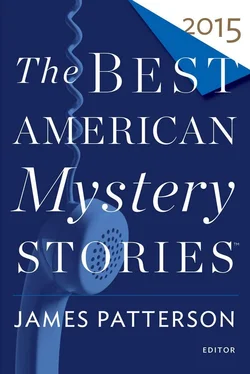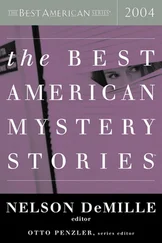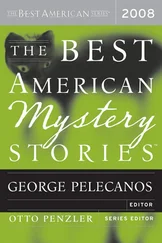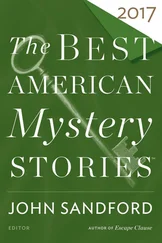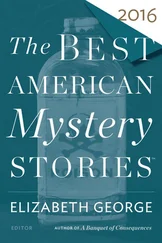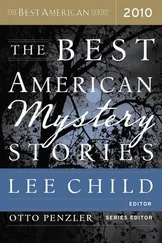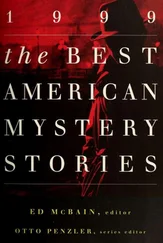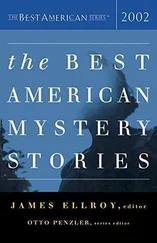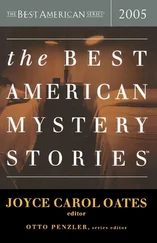The Best American Mystery Stories 2015
“The Snow Angel” by Doug Allyn. First published in Ellery Queen’s Mystery Magazine , January 2014. Copyright © 2014 by Doug Allyn. Reprinted by permission of Doug Allyn.
“Cowboy Justice” by Andrew D. Bourelle. First published in Law and Disorder: Stories of Conflict & Crime . Copyright © 2014 by Andrew D. Bourelle. Reprinted by permission of Andrew D. Bourelle.
“Rosalee Carrasco” by Tomiko M. Breland. First published in Ploughshares , Winter 2014. Copyright © 2014 by Tomiko M. Breland. Reprinted by permission of Tomiko M. Breland.
“Wet with Rain” by Lee Child. First published in Belfast Noir. Copyright © 2014 by Lee Child. Reprinted by permission of Lee Child.
“Red Eye: Patrick Kenzie vs. Harry Bosch: An Original Short Story” by Dennis Lehane and Michael Connelly. First published in FaceOff , edited by David Baldacci. Copyright © 2014 by Dennis Lehane and Michael Connelly. Reprinted by permission of Dennis Lehane and Michael Connelly.
“Harm and Hammer” by Joseph D’Agnese. First published in Alfred Hitchcock’s Mystery Magazine , October 2014. Copyright © 2014 by Joseph D’Agnese. Reprinted by permission of Joseph D’Agnese.
“The Adventure of the Laughing Fisherman” by Jeffery Deaver. First published in In the Company of Sherlock Holmes. Copyright © 2014 by Gunner Publications, LLC. Reprinted by permission of Jeffery Deaver, Manager.
“Crush Depth” by Brendan DuBois. First published in Ice Cold , edited by Jeffery Deaver and Raymond Benson. Copyright © 2014 by Brendan DuBois. Reprinted by permission of Brendan DuBois.
“Molly’s Plan” by John M. Floyd. First published in the Strand Magazine , Issue XLIII, June — Sept 2014. Copyright © 2014 by John M. Floyd. Reprinted by permission of John M. Floyd.
“A Bottle of Scotch and a Sharp Buck Knife” by Scott Grand. First published in Thuglit , Issue 11. Copyright © 2014 by Zach Basnett. Reprinted by permission of Zach Basnett.
“Shared Room on Union” by Steven Heighton. First published in The Dead Are More Visible by Steven Heighton. Copyright © 2012 by Steven Heighton. Reprinted by permission of Alfred A. Knopf Canada, a division of Penguin Random House Canada Limited, a Penguin Random House Company, and Steven Heighton.
“Afterlife of a Stolen Child” by Janette Turner Hospital. First published in the Georgia Review , vol. LXVIII, no. 3, Fall 2014. Copyright © 2014 by Janette Turner Hospital. Reprinted by permission of the Georgia Review.
“Apocrypha” by Richard Lange. First published in Bull Men’s Fiction, Bull #4. Copyright © 2014 by Richard Lange. Reprinted by permission of the author.
“Staircase to the Moon” by Theresa E. Lehr. First published in Alfred Hitchcock’s Mystery Magazine , September 2014. Copyright © 2014 by Theresa E. Lehr. Reprinted by permission of Theresa E. Lehr.
“A Man Looking for Trouble” by Lee Martin. First published in Glimmer Train Stories , Issue 90, Spring/Summer 2014. Copyright © 2014 by Lee Martin. Reprinted by permission of Lee Martin.
“Many Dogs Have Died Here” by James Mathews. First published in Iron Horse Literary Review 16.3, 2014. Copyright © 2014 by James Mathews. Reprinted by permission of James Mathews.
“Motherlode” by Thomas McGuane. First published in The New Yorker , September 8, 2014. From Crow Fair: Stories by Thomas McGuane , copyright © 2015 by Thomas McGuane. Used by permission of Alfred A. Knopf, an imprint of the Knopf Doubleday Publishing Group, a division of Penguin Random House LLC. All rights reserved. Any third party use of this material, outside of this publication, is prohibited. Interested parties must apply directly to Penguin Random House LLC for permission.
“A Kidnapping in Koulèv-Ville” by Kyle Minor. First published in The Normal School , Spring 2014. Copyright © 2014 by Kyle Minor. Reprinted by permission of Kyle Minor.
“The Home at Craigmillnar” by Joyce Carol Oates. First published in the Kenyon Review , Winter 2014. Copyright © 2014 by The Ontario Review, Inc. Reprinted by permission of The Ontario Review, Inc.
“The Shot” by Eric Rutter. First published in Alfred Hitchcock’s Mystery Magazine , November 2014. Copyright © 2014 by Eric Rutter. Reprinted by permission of Eric Rutter.
Authors are seldom cultural icons in America. A vast number of young people cannot identify a photo of Joe Biden or Mitt Romney, have never heard of The New Yorker or The Atlantic , think Abraham Lincoln is the president of the United States (yes, a survey taken last year showed that 4 percent of Americans were confident that this was the case), and guess that Stephen Hawking is, like, um, a quarterback. Yet they can instantly recognize a photo of Katy Perry or Beyoncé and, in all likelihood, provide a comprehensive discography in relatively accurate chronology. But an author? Someone who writes the books from which their favorite films are so frequently adapted? No.
Publishers spend small fortunes advertising and marketing their star authors, and legions of writers work their fingers bloody tweeting, blogging, posting, and whatever else it’s possible to do on various social media. Authors make personal appearances at bookshops, libraries, universities, and whatever organizations will have them, and they give scads of interviews for newspapers, magazines, websites, radio programs, podcasts, and television shows. Nonetheless, most may as well be laboring in the Witness Protection Program for all the recognition they receive, while their books seemingly are released as documents that only those classified with top-level security clearance may locate.
Having made that (perhaps) hyperbolic statement, I should note that there are occasional exceptions to the anonymity of authors, and there is no greater refutation of the concept of anonymity than James Patterson, the guest editor of The Best American Mystery Stories 2015.
Several factors contribute to the recognizability of Patterson’s name and, more recently, likeness. First, predictably, is the enormous popularity of his books, largely instigated by his creation of Alex Cross, the African-American psychologist who works as a homicide detective in the Washington, D.C., police department. While most mystery writers struggle with the expectation of writing a book every year, the prolific Patterson increased his presence by writing multiple books every year, ultimately producing so many different series that he hired other authors to collaborate with him. When he began to add books for young readers to his opera, his output reached a book a month — every one of which sold enormous quantities (the New York Times reported that one out of every seventeen hardcover novels published in the United States since 2006 has been written by Patterson).
As books are being published with such regularity and in such impressive numbers, there is always a Patterson book on the bestseller list and in the front of the store, so it is impossible to avoid being reminded of his work and his name. He is now a “brand.” Also, and this is extremely unusual in the world of publishing, his books are advertised on television, frequently with the author onscreen, enticing potential readers while warning them of the scary stuff that awaits them.
Finally, Patterson has become a highly visible spokesman for literacy programs, to which he offers more than his name and image. He has initiated several programs to which he has contributed millions of dollars, most recently in the form of stipends to independent booksellers.
Читать дальше
